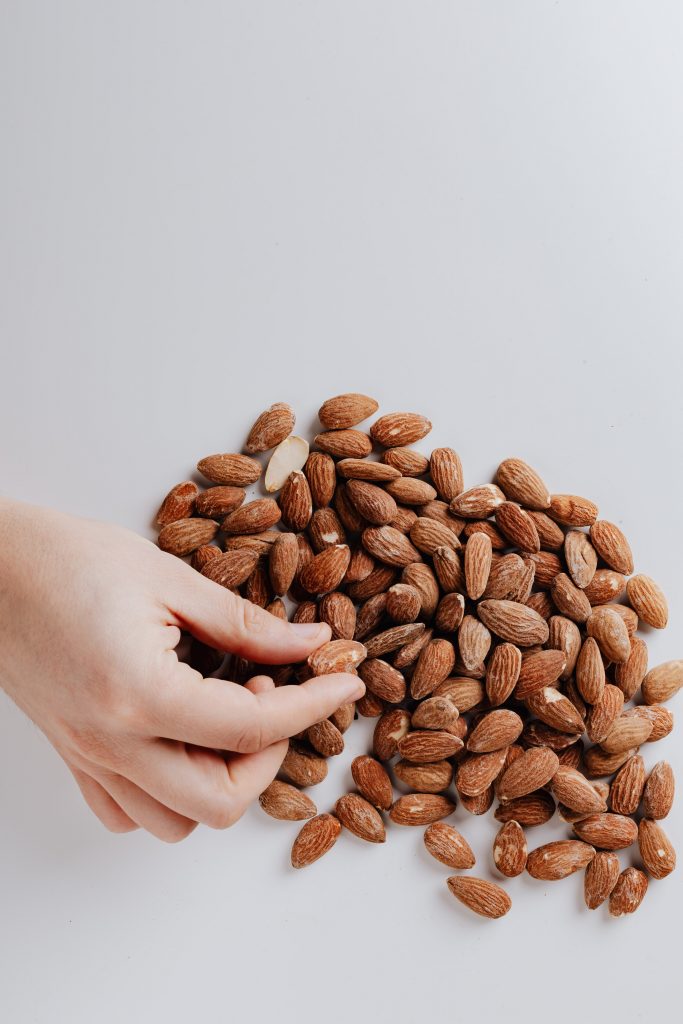As an Amazon Associate we earn from qualifying purchases.
One needs protein in their diet for repairing and building cells in their body. It is also vital for the development of children, adolescents, and pregnant mothers. This guide discusses how to eat 100 grams of protein a day as a vegetarian to help you meet your daily protein requirement.
Quick Navigation
- How to Eat 100 Grams of Protein a Day as a Vegetarian
- Method #1: Prioritize Your Protein Intake
- Method #2: Use Eggs as a Supplement for Cereals
- Method #3: Sprinkle Chopped Almonds on Top of Your Dish
- Method #4: Have Greek Yogurt
- Method #5: Start Your Day With a Protein Shake
- Method #6: Include Natural High-Protein Supplements
- Method #7: Have Peanut Butter in Breakfast
- Frequently Asked Questions
- Conclusion
How to Eat 100 Grams of Protein a Day as a Vegetarian
One has to consume a specific spectrum of nutrients to keep themselves healthy and distant from diseases. However, it can become challenging when you have to restrict yourself not to have meat. Therefore, you should know how to eat 100 grams worth of protein a day as a vegetarian.
So does it mean that you will have to make a compromise? No! Many plant-based substitutes to non-vegetarian food items like fish, egg, and chicken are equally or even richer in protein.
These substitutes are inexpensive and can be stored for long-term consumption, unlike their meat counterparts.
Method #1: Prioritize Your Protein Intake
One of the best ways to maximize your protein is to get it from premium quality snacks. Brands like DeliciousDoor source 100% plant-based snacks with a minimum protein requirement so you can snack and benefit from high-protein plant-powered snacks.
While eating a meal, start with the protein source and work your way to the carbs. One of the significant benefits of eating protein daily is the increase in Peptide YY (PYY), a gut hormone that makes you feel full and helps control unnecessary cravings.

Furthermore, a high protein diet lowers ghrelin levels, the “hunger hormone,” and raises metabolic rate after meals and sleeping.
Moreover, eating protein first can help keep blood sugar and insulin levels from skyrocketing following a meal.
In a small study, food research scholars fed people with type 2 diabetes similar meals on different days. When they ate protein and vegetables before consuming high-carb items, blood sugar and insulin levels were much lower than when the sequence got reversed.
When you eat protein first, you will feel more satisfied, and your blood sugar and insulin levels will not rise too high.
Method #2: Use Eggs as a Supplement for Cereals
Many breakfast foods, such as toast, bagels, and cereals, are low in protein. Even while oatmeal has more protein than most cereals, a normal 1-cup (240-gram) serving of oatmeal only has roughly 5 grams.
If you consume three large-sized eggs, then you will receive 19 grams (0.67 ounces) of high protein along with essential minerals like selenium and choline.
In addition to this, having eggs for breakfast keeps you full for hours and helps tackle unnecessary cravings, which results in low-calorie consumption.
According to a previous study, eating whole eggs can alter the size and form of your LDL (bad) cholesterol particles, thereby lowering your risk of heart disease.
From the above, I can conclude that eggs can increase the protein level in your diet and keep you energetic the whole day.
But if you are on a strict vegetarian diet or don’t want to use eggs, you can have chickpeas which are high in protein and serve as a good substitute for eggs.
Method #3: Sprinkle Chopped Almonds on Top of Your Dish
Almonds are highly nutritious. If you’re wondering how almonds can help you get more protein in your diet, read on. You will be surprised knowing that 1 ounce of almonds includes 6 grams of proteins.
Not only that, they contain magnesium, fiber, and heart-healthy monounsaturated fat along with quick-to-digest carbohydrates. And as per food experts, when you consume roughly 170 calories from almonds, your body just receives 133 calories only.
To enhance your protein consumption while also adding flavor and crunch, sprinkle a couple of tablespoons of chopped almonds over yogurt, cottage cheese, salads, or cereal.
In a nutshell, almonds are high in various nutrients and can help increase the amount of protein in a meal or snack.

Method #4: Have Greek Yogurt
Greek yogurt is a versatile, high-protein food. You can make greek yogurt by yourself by separating whey and other liquids from yogurt to create a richer, creamier, and higher-protein product.
Depending on the brand, a 7-ounce (240-gram) meal has 17–20 grams of protein. It is roughly twice as much as regular yogurt.
Greek yogurt boosts the synthesis of the gut hormones glucagon-like peptide 1 (GLP-1) and PYY, making you feel full and keep you from getting hungry.
Greek Yoghurt also has conjugated linoleic acid (CLA), which helps in reducing fat, as per some studies.
The tanginess of Greek yogurt pairs beautifully with berries or chopped fruit. It also serves as a sour cream alternative in dips, sauces, and other dishes.
Method #5: Start Your Day With a Protein Shake
Many smoothies are high in fruit, veggies, or juice but low in protein.
On the other hand, a shake or smoothie can be a fantastic breakfast alternative, provided you use healthful components.
Protein powders make making a nutritious, high-protein shake simple. Whey, soy, egg, and pea protein are among the many options available.
When it comes to making you feel full, the most significant studies on whey protein powder look to have the edge over the others. In reality, one scoop of whey powder (28 grams) contains roughly 17 grams of protein on average.
Here’s how to make whey shake:
- Shake with Whey Protein unsweetened almond milk 8 ounces (225 grams)
- One scoop of whey powder (28 grams)
- 150 grams (1 cup) fresh berries
- If preferred, use stevia or another healthy sweetener.
- Crushed ice, 1/2 cup (70 grams)
- In a blender, combine all of the ingredients and blend until smooth.
- Use more protein powder or peanut butter, almond butter, flaxseeds, or chia seeds to enhance protein.
Method #6: Include Natural High-Protein Supplements
If you are looking for the best vegetarian source of protein then soybeans are the answer. Soybeans have a protein level of 36–56 percent of their dry weight. The protein content of a cup of cooked soybeans (172 grams) is around 29 grams.
Moreover, soy protein has a great nutritional value. However, it is not as high in quality as animal protein.
Glycinin and conglycinin are the two primary forms of protein found in soybeans, accounting for around 80% of the total protein content. These proteins may cause allergic responses in some people.
Soybeans also help to decrease the cholesterol levels in one’s body.
Method #7: Have Peanut Butter in Breakfast
Peanut butter is a tasty, high-protein meal with a silky texture that goes well with various foods.
According to studies, peanut butter has been linked to various health benefits, including reduced appetite, increased fat burning, and lower blood sugar levels.
Solid fruits like apples and pears, high in fiber and antioxidants but low in protein, might benefit from peanut butter to enhance their flavor and nutritional value.
Spreading two tbsp (32 grams) of peanut butter from a jar on sliced fruit can add 7 grams of protein to the total. Peanut butter goes nicely with various other foods, such as oats, celery, whole-wheat toast, and yogurt.

Frequently Asked Questions
How Much Protein Should One Have In a Day?
As per experts, a fully grown man should eat 0.8 grams of protein per Kg in his diet. Meanwhile, a fully grown female should have 46 grams of protein in her diet.
What Will Happen if I Eat a Lot of Protein?
Excess protein gets stored as fat, but excess amino acids get eliminated. It can contribute to weight gain in the long run, especially if you eat too many calories while boosting your protein intake.
Conclusion
Protein is a crucial element that has to be present in one’s diet. Amino acids that chain up together to form protein are essential for one’s physical growth, especially children of a very young age. The lack of protein in their diet often results in stunted growth and a weak physique.
It is also evidenced that children in poor and developing countries consume less diet than required, resulting in poor growth. However, the World Health Organization has raised its concerns on this topic and is working together with developing nations to eradicate hunger and poverty.
